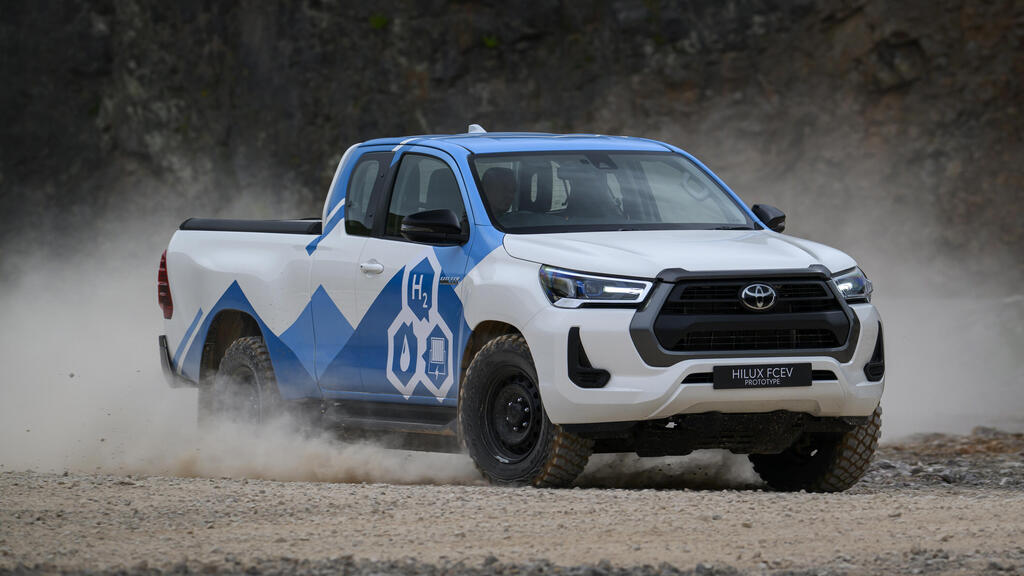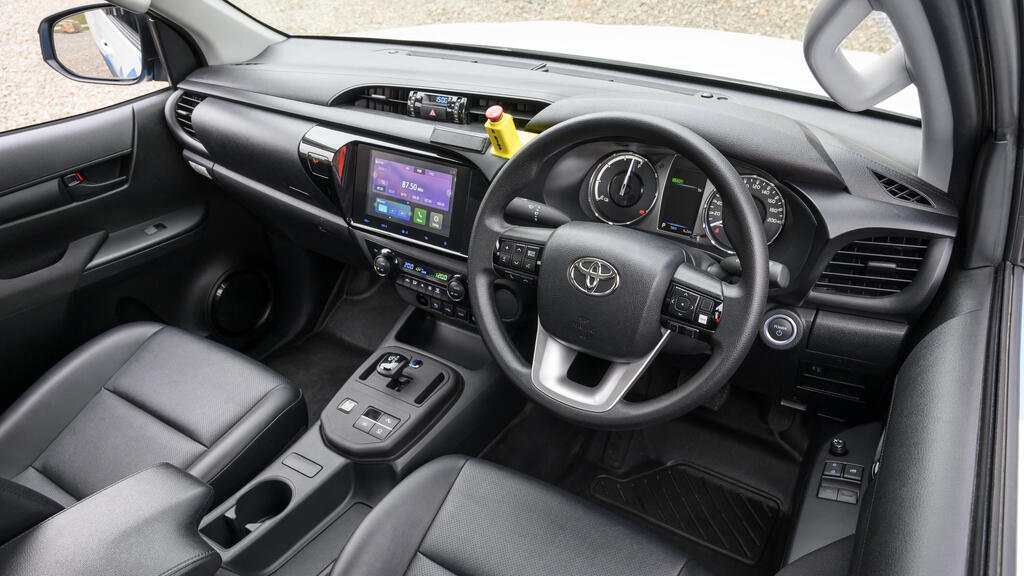Getting your Trinity Audio player ready...
Toyota has unveiled a hydrogen-powered prototype of the Hilux, the most popular pickup truck model worldwide except for the U.S., with over 20 million units produced to date. According to Toyota, 10 units were produced at the Derby factory in the UK, which is also responsible for its Corolla model (hatchback and station wagon).
The new model’s global debut is expected at the 2024 Olympic Games opening ceremony in Paris in just over a month, and until then, the new pickup is expected to undergo a series of tests under extreme off-road conditions.
The prototype is based on the Hilux’s extra-cab version. The model’s exterior design remains the same, while changes in the driver’s environment include a hydrogen tank gauge instead of an RPM gauge and a different console between the seats fitted with a drive mode selector (forward-reverse-park), similar to the company’s Mirai model, which is also hydrogen-powered.
A hydrogen engine refers to the production of electrical energy from the electric motor connected to the wheels. The electricity is generated via a chemical process involving hydrogen stored in a dedicated tank and "regular" oxygen from the air, with the only exhaust emission being completely clean water vapor.
Under the front hood is the hydrogen engine, fed by three tanks with a 2.6 kg capacity each, located between the ladder frame rails. A battery that stores the electricity produced by the hydrogen engine is placed in the back, while an electric motor integrated into the rear axle delivers 182 hp directly to the wheels adjacent to them. Toyota doesn’t publish the model’s performance data, except for a driving range estimated to allow 600 km between refuels.
A hydrogen engine has many advantages compared to regular electric propulsion, where batteries are often recharged with electricity produced by polluting power plants. Additionally, the refueling process is significantly shorter than regular fast charging and takes just a few minutes, similar to the process in gasoline and diesel engines.
It offers an additional advantage for commercial vehicles as it is significantly lighter than an electric propulsion system, due to the absence of its heavy batteries, thus allowing for higher payload capacity. The system’s major disadvantage is the refueling infrastructure, which is expensive to establish and far less common than electric charging stations.
On the bottom line, hydrogen has many significant advantages, but regulatory intervention will be needed to help establish the infrastructure it requires to become common and mature for mass production. Time will tell if this happen any time soon.



